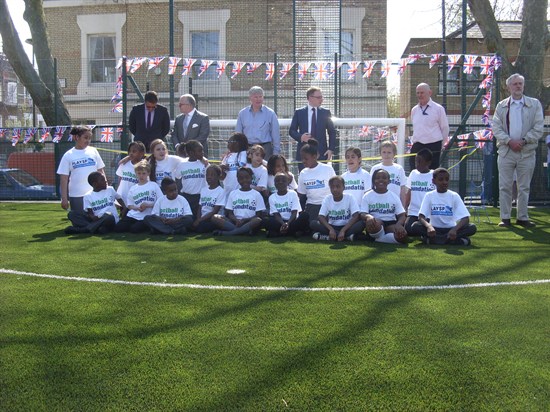Can Artificial Pitches Stop the Decline in English Grassroots Football?
[caption id="attachment_1177" align="alignnone" width="550"] Image: The Football Foundation[/caption]
It seems that concerns over the future of the England national team are finally being taken seriously by those in control of the game. The government, the FA and the Premier League have joined forces to announce a £102 million fund aimed at increasing participation in grassroots football throughout the country. And it is believed that a hefty slice of that money has already been set aside for the construction of 3G artificial pitches in the areas that need them most.
The Football Foundation will administer the funds, which have been earmarked for bringing England’s decaying football facilities into the 21st century. But is spending so much money on artificial pitches a sensible use of resources? And is the surface conducive to developing the stars of the future?
One of the key differences between this latest initiative and others that have gone before is that fact that almost any grassroots association is eligible to apply for funding. Councils, local clubs, charities and schools are all expected to apply for a grant, so there is every chance that participation at the grassroots level will increase over the next few years – and that’s excellent news for the future of the England national team.
Image: The Football Foundation[/caption]
It seems that concerns over the future of the England national team are finally being taken seriously by those in control of the game. The government, the FA and the Premier League have joined forces to announce a £102 million fund aimed at increasing participation in grassroots football throughout the country. And it is believed that a hefty slice of that money has already been set aside for the construction of 3G artificial pitches in the areas that need them most.
The Football Foundation will administer the funds, which have been earmarked for bringing England’s decaying football facilities into the 21st century. But is spending so much money on artificial pitches a sensible use of resources? And is the surface conducive to developing the stars of the future?
One of the key differences between this latest initiative and others that have gone before is that fact that almost any grassroots association is eligible to apply for funding. Councils, local clubs, charities and schools are all expected to apply for a grant, so there is every chance that participation at the grassroots level will increase over the next few years – and that’s excellent news for the future of the England national team.
 Image: The Football Foundation[/caption]
It seems that concerns over the future of the England national team are finally being taken seriously by those in control of the game. The government, the FA and the Premier League have joined forces to announce a £102 million fund aimed at increasing participation in grassroots football throughout the country. And it is believed that a hefty slice of that money has already been set aside for the construction of 3G artificial pitches in the areas that need them most.
The Football Foundation will administer the funds, which have been earmarked for bringing England’s decaying football facilities into the 21st century. But is spending so much money on artificial pitches a sensible use of resources? And is the surface conducive to developing the stars of the future?
One of the key differences between this latest initiative and others that have gone before is that fact that almost any grassroots association is eligible to apply for funding. Councils, local clubs, charities and schools are all expected to apply for a grant, so there is every chance that participation at the grassroots level will increase over the next few years – and that’s excellent news for the future of the England national team.
Image: The Football Foundation[/caption]
It seems that concerns over the future of the England national team are finally being taken seriously by those in control of the game. The government, the FA and the Premier League have joined forces to announce a £102 million fund aimed at increasing participation in grassroots football throughout the country. And it is believed that a hefty slice of that money has already been set aside for the construction of 3G artificial pitches in the areas that need them most.
The Football Foundation will administer the funds, which have been earmarked for bringing England’s decaying football facilities into the 21st century. But is spending so much money on artificial pitches a sensible use of resources? And is the surface conducive to developing the stars of the future?
One of the key differences between this latest initiative and others that have gone before is that fact that almost any grassroots association is eligible to apply for funding. Councils, local clubs, charities and schools are all expected to apply for a grant, so there is every chance that participation at the grassroots level will increase over the next few years – and that’s excellent news for the future of the England national team.

